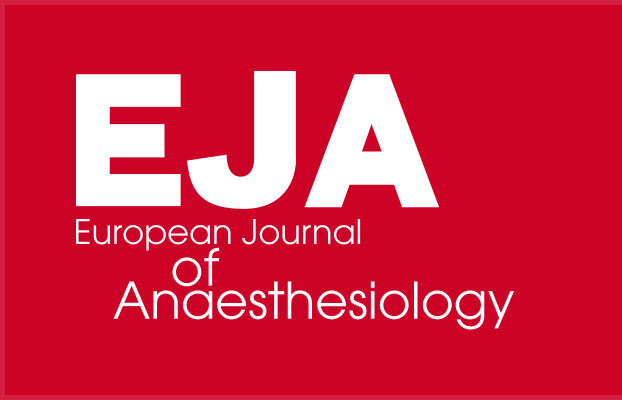Congress Newsletter 2025
Restrictive Versus Liberal Transfusion Triggers
Is there a Winner?
What is the optimal threshold for initiating red blood cell transfusions in hospitalised patients and in those undergoing surgery? The debate is ongoing at Euroanaesthesia 2025, where experts will compare transfusion strategies and discuss which patients are likely to benefit from restrictive versus liberal transfusion approaches.
“Recent advancements in transfusion medicine have refined our understanding of when and how to administer red blood cell transfusions,” said Ecaterina Scarlatescu, MD, PhD, assistant professor in anaesthesiology and intensive care medicine at the University of Medicine and Pharmacy Carol Davila in Bucharest, Romania. “Compared to more than 50 years ago, nowadays, the pendulum has swung dramatically toward restrictive approaches. This shift was driven by legitimate concerns regarding resource utilisation, transfusion-associated complications, and accumulating evidence supporting restrictive approaches in specific clinical contexts.”
International guidelines1 currently recommend using a hemoglobin level below 7 g/dL as a transfusion trigger for hospitalised adults who are hemodynamically stable. However, clinicians have the final say in selecting the approach that is most likely to benefit their patients. For example, a hemoglobin threshold of 7.5 g/dL can be used for patients who are undergoing cardiac surgery, while a threshold of 8 g/dL may be optimal for those undergoing orthopedic surgery and those with preexisting cardiovascular disease.
In the guidelines and institutional protocols designed to guide clinicians through the decision-making process, hemoglobin plays a central role in informing transfusion strategies. Nevertheless, hemoglobin levels represent a somewhat arbitrary criterion, which must be interpreted in the larger clinical context surrounding individual cases. “While anaemia indicates a reduction in red blood cell mass, measuring this directly in clinical settings is challenging, hence, hemoglobin concentration and hematocrit levels are evaluated instead,” Scarlatescu noted. “These values must be interpreted with caution, as they are concentrations influenced by fluctuations in plasma volume and are also subject to methodological and sampling uncertainties. Relying solely on hemoglobin levels to guide transfusions [is a flawed method], regardless of whether a restrictive or liberal approach is adopted.”
In certain medical scenarios, a liberal transfusion strategy, which triggers transfusion when the hemoglobin level drops below 9 or 10 g/dL, may be more beneficial than a restrictive approach. While restrictive strategies are generally considered safe and preferable, some populations, such as patients with certain cardiovascular conditions and those requiring neurocritical care, may benefit from a more liberal approach. A multicenter randomised controlled trial2 recently showed that patients with anaemia and acute brain injury randomized to a liberal transfusion strategy at a hemoglobin threshold of 9 g/dL had lower odds of unfavourable neurological outcomes at 180 days compared with patients randomised to a restrictive strategy using a haemoglobin threshold of 7 g/dL. Other studies have suggested that a liberal transfusion approach may benefit adults aged 65 years and older undergoing surgical procedures3, as well as patients with myocardial infarction and anaemia4.
Over the past decades, improvements in screening and blood banking practices have diminished concerns about transfusion-transmitted infections. However, noninfectious complications, some of which can be life-threatening, still carry significant weight in the selection process. The key to selecting a strategy that is likely to improve outcomes is to prioritise the patient’s needs. “Our approach should center on a patient-focused precision transfusion medicine model, one that takes into account individual physiology, comorbidities, and clinical context, rather than relying on uniform thresholds, regardless of whether they are termed restrictive or liberal,” Scarlatescu added. “Transfusions should be [limited] to those patients who genuinely need them. Generally, considerations around resource utilisation, including blood product availability and cost, support restrictive transfusion strategies at the population level. However, these factors should not overshadow the individual needs of patients. The appropriate allocation of blood products should prioritise clinical necessity rather than follow arbitrary thresholds.”
References:
- Carson JL, Stanworth SJ, Guyatt G, et al. Red Blood Cell Transfusion: 2023 AABB International Guidelines. JAMA. 2023;330(19):1892-1902.
- Taccone FS, Rynkowski CB, Møller K, et al.; TRAIN Study Group. Restrictive vs Liberal Transfusion Strategy in Patients With Acute Brain Injury: The TRAIN Randomized Clinical Trial. JAMA. 2024;332(19):1623-1633.
- Simon GI, Craswell A, Thom O, Fung YL. Outcomes of restrictive versus liberal transfusion strategies in older adults from nine randomised controlled trials: a systematic review and meta-analysis. Lancet Haematol. 2017;4(10):e465-e474.
- Carson JL, Brooks MM, Hébert PC, et al; MINT Investigators. Restrictive or Liberal Transfusion Strategy in Myocardial Infarction and Anemia. N Engl J Med. 2023;389(26):2446-2456.









